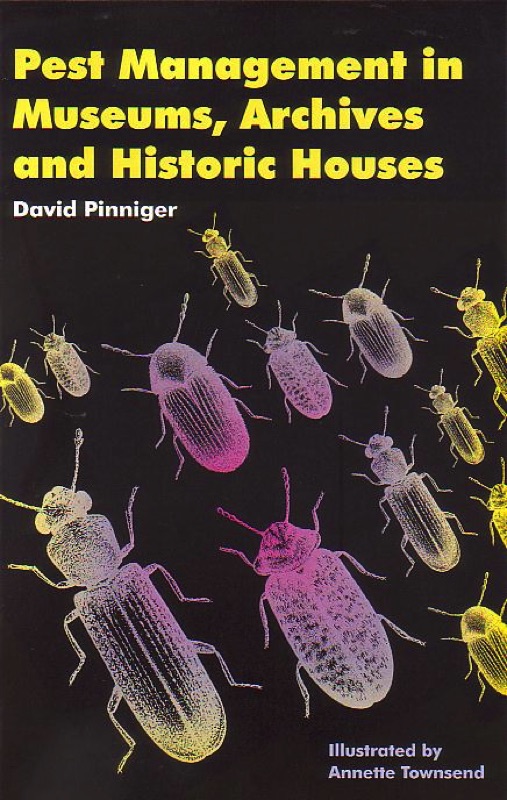Pest Management in Museums, Archives and Historic Houses is a practical working handbook for the conservator and all persons concerned with the care and management of collections. An essential guide to the recognition of inset, rodent and bird pests with advice on the practical steps required to present and control damage to collections, it incorporates many recent developments in Integrated Pest Management (IPM) in the heritage sector.
Presenting invaluable new information on the trapping and detection of pests and clear explanation of the advantages and disadvantages of physical and chemical control measures, David Pinniger also deals with concerns about the use of pesticides and their effects on staff and the environment. In addition, he demonstrates that implementing IPM is not only the safer option but also a more cost-effective solution to the complex problems of pest control.
With its specially commissioned illustrations providing some of the clearest pictures of museum insects yet published, this book offers comprehensive guidance for the treatment of any pest problem likely to be encountered in museums, archives and historic houses.
Reprinted 2004, 2008
Acknowledgements
Preface
Integrated Pest Management in museums
Introduction
What is IPM?
Why IPM in a museum?
Developing an IPM strategy
Preventing pests
Recognising pests
Assessing the problem
Solving pest problems
Implementing IPM
Insect pests
Why are insects pests?
What are insects?
Major pest types
Pests which attack wood, fur and feathers
Pests which attack herbarium specimens and dried food
General detritus feeders
Woodborers
Termites
Insect detection and monitoring
Where do insects come from?
How to find insects, where to look and what to look for?
Insect traps
General principles of insect trapping
Wooden objects - X-rays, ultrasonics and incubation
Prevention of insect infestation
Exclusion
Environment
Hygiene
Storage
Inspection
Quarantine
Control of insects
Options for treatment
Insect control in buildings
Insect control in objects
Damage to objects by insecticides
After treatment
Safety and pesticide use
Rodents and birds (Adrian Meyer)
Rodents
Birds
Other vertebrate pests
Implementing IPM
Museum practice
Resources
Collection policy, museum objectives and functions
Interaction with other museums and collections
Age of collection and buildings and special constraints
Insect pest problems in tropical and sub-tropical climates
Training and communication
Pest control contractors
Health and safety
IPM and the future
References
Further reading
Reviews
It is a useful tool for the conservator of museums and historical houses as well as the pest control professional who is working with this sector.
Fumigants & Pheromones 61 (Fall 2001) 3
The book is very easy to read and understand, especially for non-entomologists and pest controllers...I would thoroughly recommend it to any museum staff and keepers of historic collections.
Antenna 26 (January 2002) 29
Once again David Pinniger has produced an easy-to-read, well-structured and informative publication with numerous checklists and guidelines essential for the development and execution of a successful IPM strategy. Not only should it be considered a standard reference for specialist and non-specialist alike but also an invaluable tool for training and communicating this important aspect of collection care.
The IPCRA Newsletter 11(1) (January 2002) 28-29
...Pest Management in Museums, Archives and Historic Houses is a valuable guide for people who aim to protect collections from pests. It will be especially useful to those who are experiencing their first professional encounter with pests and feel they need practical and concise advice to help them find solutions.
NPO Journal 10 (April 2002) 14
I enjoyed the simple, clear style of the text and even found a few things to smile about...I have already managed to apply the information in Pest Management in Museums, Archives and Historic Houses a number of times...[the book] will be useful for anyone responsible for managing IPM programs.
Museum National 11(2) (November 2002) 31-32
...now we have a useful and practical guide for conservators and anyone who has responsibility for the care of collections...Pest Management in Museums, Archives and Historic Houses fills a need for a comprehensive guidebook on pest management...[an] excellent resource...
Journal of the American Institute for Conservation 42 (Spring 2003) 129-131
